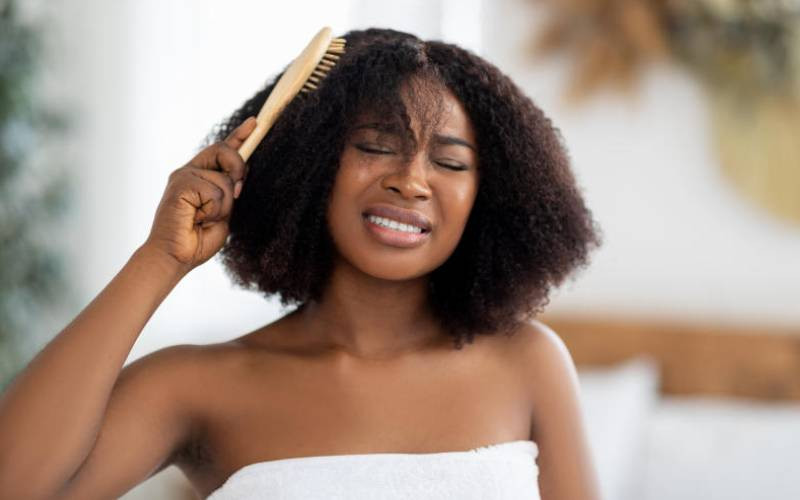
Knowing your hair texture will help you take better care of it and reduce the chances of breakage, thinning and lack of hair growth.
Below are factors that determine your hair type.
1. Hair Density
This refers to how much hair you have on your scalp. There are three levels of density depending on the number of individual hair strands on your scalp. You have thin density hair if you can see your scalp easily, medium density if it (scalp) is partially visible and thick if it is almost completely invisible.
A simple mirror test will help you determine your hair density. Grab a big section of your hair and pull it aside. The extent to which you can see your scalp determines your hair density.
2. Hair Diameter
The diameter of your hair refers to the width of an individual hair strand. Your hair can either be thin, medium or thick in diameter. Thin hair can hardly be felt between your fingers, medium hair can be felt slightly and thick hair can be felt.
Alternatively, you can compare your strands of hair to sewing thread. Thin hair will be comparatively thinner than the thread, medium hair is about the same thickness as the thread and thick hair is thicker.

3. Porosity
Porosity refers to your hair’s ability to absorb and retain moisture and subsequently, product. Submerge a strand of your hair in a cup of water to determine its porosity.
Hair that is very porous sinks to the bottom of the cup. It gets rough and frizzy, dries very quickly after a wash or after oiling it and breaks easily. Frequently using chemicals on your hair makes it highly porous.
A strand that floats in the middle of the cup is of medium or normal porosity. When you wash it, it feels wet and not sticky. It’s low maintenance and easy to style. Medium porosity hair doesn’t get damaged easily.
Hair that is a little porous floats on the surface of the cup. This hair doesn’t absorb moisture and products easily. When washing, you need a lot of water to make it wet. It then takes a long time to dry.

4. Hair Elasticity
This refers to your hair’s ability to stretch. Highly elastic hair is shiny and bouncy. To test hair elasticity, wet your hair, pluck a strand and stretch it as far as it can go without breaking.
Very elastic hair stretches a long way without breaking. If yours does so it means you have strong hair! Coarse hair is often very elastic and can stretch up to 50% of its original length. Hair that is of medium elasticity stretches a bit before breaking. Hair that is limp and breaks immediately it is stretched has low elasticity.
Harsh chemicals and shampoos make your hair less elastic. You can increase elasticity by using natural hair masks and oils.

5. Curl pattern
Hair is categorised into curly, wavy, kinky and straight patterns.
African hair is mainly kinky. It has a high hair density with very tight curls which resemble a Z pattern. This hair type is coarse, rough, and prone to breakage and damage if not cared for properly. Kinky hair can be soft (4A), wiry (4B) and extremely wiry (4C)
By knowing your hair texture you will be able to take better care of it.
VIDEO OF THE DAY:
What is the most embarrassing thing you have ever worn?
 The Standard Group Plc is a multi-media organization with investments in media platforms spanning newspaper print
operations, television, radio broadcasting, digital and online services. The Standard Group is recognized as a
leading multi-media house in Kenya with a key influence in matters of national and international interest.
The Standard Group Plc is a multi-media organization with investments in media platforms spanning newspaper print
operations, television, radio broadcasting, digital and online services. The Standard Group is recognized as a
leading multi-media house in Kenya with a key influence in matters of national and international interest.


